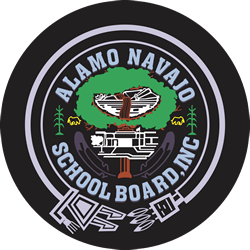About the Alamo Navajo School Board
Vision Statement
It is the Vision of the Alamo Navajo School Board, Inc., that Alamo community members will attain physical, spiritual and emotional well-being; community and individual self-sufficiency; and realize harmony between tradition, cultural values, and the mainstream environment.
Mission Statement
It is the Mission of the Alamo Navajo School Board, Inc., to provide the resources and services necessary to empower community members to attain good health and self-sufficiency through excellence in education. ANSB, Inc., will carry out its mission in the spirit of Indian Self-Determination and local decision making in the planning and administration of its programs.
Background
According to the 2000 census, the Alamo community has a population of 2072 with a 60% unemployment rate and is the poorest Native American Community not only in the State of New Mexico but also in the United States. Currently 56% of the population lives below the poverty level and a per capita income of $6528. According to the Coalition of Native American grantees, Department of Labor, it has the lowest per capita income of all Native American communities in the United States. Separated geographically from the main reservation, the Alamo has long been the stepchild of the Navajo Nation, largely neglected by the Bureau of Indian Affairs as well as by the tribal government.
In 1968, the BIA placed Alamo under the administration of the Navajo Nation, transferring it from the Southern Pueblos Agency, Albuquerque Area Office, to Eastern Navajo Agency in Crownpoint, New Mexico, and the Navajo Area Office in Gallup, New Mexico. The Navajo Nation receives over 3 million dollars from the BIA for governmental infrastructure at Alamo. Less than 1% actually reaches the Alamo.
Even today, Alamo exists in a cloudy bureaucratic limbo. It’s not legally a reservation has no congressionally recognized boundaries, and no water or mineral rights for its 63,000 acres of land.
The original BIA school at Alamo was built in the 1930’s, but closed in 1941. Children from Alamo were sent to boarding schools off the reservation in Santa Fe, Albuquerque, and other distant places. In 1957, the BIA dormitory was put into operation in Magdalena and children were boarded there and attended the Magdalena public school. As Alamo parents watched their children go off to school in the fall, returning only for holidays and some weekends, they began to discuss a way to create a community school at Alamo. A school would eliminate the 35-mile bus ride to Magdalena, the need to house children in the BIA dormitory, and allow the children to live at home, give parents the opportunity to be involved in their children’s education.
The creation of the Alamo Navajo School Board, Inc. in 1979 represented the political birth of the Alamo’s leaders. Taking advantage of the 1975 Indian Self-Determination Act, the School Board was able to contract for its own services, and the Alamo leaders began to make decisions for themselves. The concept of self-determination found fertile ground in a community, which knew it wanted a school, health services, and local control, but previously had no vehicle to obtain those things.
The Alamo Navajo Community School opened its door on October 1, 1979 as a K-8 school in four portable buildings. On December 15, 1980, the contract scope was amended making it a K-12 school with six additional trailers and 317 students. In 1982, planning, coordination, and construction for a permanent facility was begun, culminating in 54,000 square foot structure, which includes classrooms, labs, a library/media center, gymnasium, cafeteria, agriculture/greenhouse lab, and shops for industrial arts.
The Alamo Navajo School Board, Inc. now operates the K-12 schools as well as an Indian Health Clinic, Early Childhood Center, Adult Education Program, Roads Department, Technology Department, & Wellness Center.
ANSB Board of Trustees
President: Rick Padilla
Vice-President: Raymond Apachito Jr.
Member: Cecil Abeyta
Member: Marie Pino
Member: Carol Vicente

